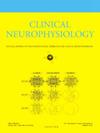脑机接口与无创脑刺激联合应用在脑卒中后运动恢复中的研究进展。
IF 3.6
3区 医学
Q1 CLINICAL NEUROLOGY
引用次数: 0
摘要
中风仍然是全球成年人致残和死亡的主要原因之一。脑机接口(BCI)和非侵入性脑刺激(NIBS)在促进脑卒中患者运动恢复方面显示出显著的潜力。脑机接口与NIBS联合使用通过实时反馈机制增强脑功能重组,加速脑卒中后运动恢复。通过调节神经可塑性,这种联合方法可以改变运动恢复的轨迹,为中风康复提供了新的治疗途径。本文综述脑机接口与脑功能刺激联合治疗在脑卒中患者运动功能康复中的应用及最新进展。具体来说,它概述了这种综合方法的优点和挑战,包括使用TMS, tDCS, tACS和其他新兴的神经刺激技术。脑机接口与NIBS的融合尚处于探索初期,尚未建立统一、规范的协议。未来的研究应着眼于优化多模态整合,探讨潜在的神经可塑性机制,并评估脑机接口联合NIBS的长期疗效。本文章由计算机程序翻译,如有差异,请以英文原文为准。
Progress in the combined application of Brain-Computer Interface and non-invasive brain stimulation for post-stroke motor recovery
Stroke remains one of the leading causes of disability and death among adults globally. Both Brain-Computer Interface (BCI) and Non-invasive Brain Stimulation (NIBS) have shown significant potential in facilitating motor recovery in stroke patients. The combination of BCI and NIBS enhances brain functional reorganization and accelerates motor recovery post-stroke through a real-time feedback mechanism. By modulating neural plasticity, this combined approach can alter the trajectory of motor recovery, offering a novel therapeutic avenue for stroke rehabilitation. This review examines the application and recent advancements of BCI integrated with NIBS in motor function rehabilitation for stroke patients. Specifically, it outlines the advantages and challenges of this combined approach, including the use of TMS, tDCS, tACS, and other emerging neurostimulation technologies. While the integration of BCI and NIBS is still in the early stages of exploration, a unified, standardized protocol has yet to be established. Future research should focus on optimizing multimodal integration, investigating the underlying neuroplasticity mechanisms, and evaluating the long-term efficacy of BCI combined with NIBS.
求助全文
通过发布文献求助,成功后即可免费获取论文全文。
去求助
来源期刊

Clinical Neurophysiology
医学-临床神经学
CiteScore
8.70
自引率
6.40%
发文量
932
审稿时长
59 days
期刊介绍:
As of January 1999, The journal Electroencephalography and Clinical Neurophysiology, and its two sections Electromyography and Motor Control and Evoked Potentials have amalgamated to become this journal - Clinical Neurophysiology.
Clinical Neurophysiology is the official journal of the International Federation of Clinical Neurophysiology, the Brazilian Society of Clinical Neurophysiology, the Czech Society of Clinical Neurophysiology, the Italian Clinical Neurophysiology Society and the International Society of Intraoperative Neurophysiology.The journal is dedicated to fostering research and disseminating information on all aspects of both normal and abnormal functioning of the nervous system. The key aim of the publication is to disseminate scholarly reports on the pathophysiology underlying diseases of the central and peripheral nervous system of human patients. Clinical trials that use neurophysiological measures to document change are encouraged, as are manuscripts reporting data on integrated neuroimaging of central nervous function including, but not limited to, functional MRI, MEG, EEG, PET and other neuroimaging modalities.
 求助内容:
求助内容: 应助结果提醒方式:
应助结果提醒方式:


